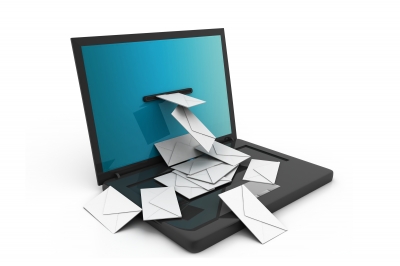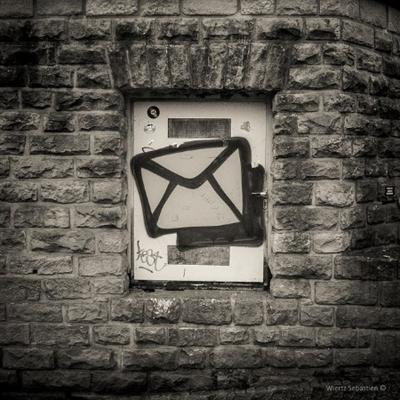The latest marketing stats suggest that 74% of consumers prefer to receive commercial communications through their email.
But if this true, then why are people still choosing to unsubscribe from certain emails?
Figuring out where you went wrong is the first thing you need to do to stop those numbers dropping.
And that’s why I’ve compiled a list of the top 9 reasons people might be unsubscribing from your emails (and how to stop them, of course!)
1. You’re Emailing Them Too Much
Emailing your customers too often can become really tiresome for them, making them want to unsubscribe.
Try to remember that each customer is probably subscribed to multiple newsletters and email lists.
This is already a lot for them to take in.
Don’t be that one business that nags and annoys them. Instead of listening, they’ll shut you up.
A survey of nearly 1,500 U.S. consumers done by Constant Contact showed that 69% of people unsubscribed because they were receiving too many emails from the business/organization.
Solution
There’s no standard answer for how frequently you should be emailing your customers because it varies widely depending on your industry, what types of emails your sending (newsletters, coupons, competitions, offers etc.) and your particular client base.
It’s best to experiment with the frequency and keep a close eye on your unsubscribe rate (your email software should allow you to do this).
As a guideline, the average unsubscribe rate is about 0.5% (but this varies widely depending on the industry).
Another good idea is to tell your customers how often to expect your emails and to provide them with frequency options. This means that your customers won’t be taken off-guard, and/or will change the settings of your emails so that you won’t inadvertently bombard them with emails that they don’t want.
2. You’re Not Emailing Them Enough
This is a slightly less common way for people to unsubscribe, mostly because they’ve forgotten that you even existed so that don’t think of unsubscribing.
However, when you do finally send them an email, they’ll likely unsubscribe while wondering when they had even subscribed to you in the first place.
Definitely not good.
You should be sending out a newsletter at least once every 4-6 weeks. This provides a constant reminder to your clients that you exist, but not so much that you’ll be spamming them.
Solution
The first solution is pretty much the same as it is for sending too many emails. Do some tests and figure out how often you should be emailing so that your unsubscribe rate goes down.
If you’re not sending emails because you don’t have time, create a few templates that make sending out emails easier. This means that you don’t have to consider layout or what type of content that you’ll be sending out.
If it’s a newsletter, for example, you might update it every month with your newest blogs, but keeping a similar layout and structure, making it easy and quick to send out monthly newsletter.
And don’t forget to create a calendar to remind you to send it out.
3. You Broke Your Promise
There is nothing more frustrating and disappointing then a broken promise. If you promise something for subscribing, make sure that you follow through.
And fast.
That means, somewhere along the lines, consumers started expecting something that you weren’t offering.
This is why you have to manage customer expectation as to avoid people signing up for something that they didn’t want.
Solution
Try creating a bulletted list of what your customers can expect to receive through their subscription to your email list. This will clear the air before your customers become disappointed with you and unsubcribe.
Sephora have done a great job with this, providing people who become a premium member a list of what this new membership offers them.
Or why not try to provide the customer with one of the promises in your automated first email? This will make them engage in what you’re offering, while also making you trust you more.
4. Your Topics Aren’t Relevant
Just like this festive pug, your emails might have become irrelevant to you customers.
There are certain topics that consumers will only remain interested in for a certain stage in their lives. This means that once they’ve moved on from this stage (even if you haven’t), they’ll likely unsubscribe from your newsletter because it’s not suited to their needs anymore.
For example, someone who’s buying a house might subscribe to realty email list. But once they’ve found their perfect house, they’ll unsubscribe because what you’re sending them is not relevant to them anymore.
In fact, 56% of people said that they unsubscribed because the content is no longer relevant.
Solution
If you’re in an industry where such transitions might make you irrelevant to your customer’s lives, then it’s a good idea to segment your customers into different email lists that will provide those customers with alternative (and more relevant) content.
To use the previous example, if you’re in real estate you might want to provide customers with an option to be “buyers” or “owners” of property. This means then when a buyer transitions to an owner, you can provide them with more relevant content (such as updates on the market, keeping them updating on zoning laws, updating them about house price fluctuations).
5. Your Emails Are Boring
Unfortunately, there are dozens of ways that you could be potentially boring to your customers.
Boredom is a very subjective emotion. One customer’s treasure is another’s trash.
But that doesn’t mean you can’t do anything to ensure that as few people are as bored as possible.
Solution
- If you’re sharing new content on your blog, make sure people know it’s advice that they can apply to their lives. For example, if you’re blog is about different face creams, you can engage people with the content by telling them that reading the blog will help them choose the right face cream that will help them feel younger, fresher and more awake. Benefits! Always push the benefits!
- Include only one or two eye-catching photos in your emails. This will make them more interesting for you costumers, without messing up your mobile optimization (which, by the way, I’ll get to in just a moment).
- Ask questions. Get people to engaged. Don’t forget to provide an easy way for them to reply to you. You can even ask what do customers want to hear about. This will help you segment them into relevant email lists, and also create content that will keep them interested.
- Treat people like people. Don’t be afraid of personal pronouns. It’ll make you seem less spammy and more like you’re genuinely trying to engage them in a conversation.
- Get to the point quickly. Tell your customers what you will be saying in this email/newsletter within the first few paragraphs.
6. Your Emails Don’t Offer Anything To The Customer
What’s the point in subscribing to an email list if you don’t get anything from doing it? There has to be an incentive.
You don’t go to the buy a coat just because.
You buy a coat because you want to stay warm and this coat has promised to do that for you.
If you’re sending an email every month that doesn’t provide any value to your customer, then why would they keep subscribing? What does it do for them?
Solution
Make sure that you are clearly offering something of value in every email. Maybe it’s advice or promotional codes. Maybe you’re offering them webinars or updates on new products or services that the customer might be interested in.
Whatever you’re sending them, make sure that it’s clear that the customers are getting some benefit from being subscribed to your mailing list.
Marketing Profs always send out fantastically crafted emails, and it’s hard not to notice what’s on offer!
7. Your Emails Aren’t Optimized For Mobile
Only 11% of emails are optimized for mobile phones, so chances are, you’re one of the 89% that haven’t optimized your emails yet.
Why businesses are so slow to make sure that they’re emails are easily read on mobile devices is beyond me.
With 48% of emails being opened on mobile devices and 69% of mobile users deleting emails that aren’t optimized for mobile, you think businesses would be making sure that mobile device users are all set to read your emails wherever they are.
In fact, customers find emails that aren’t optimized for mobile devices so irritating that 30% of them will actually unsubscribe from your mailing list because of it.
Solution
Look at your emails on your phone. (Crazy idea, I know)
Make sure you’re subscribed to your own newsletter and have viewed it on different platforms. If anything looks off, adjust it.
If you don’t know what your emails should look like on a mobile device, check out this article here.
8. They Can Find The Exact Same Information Online
Why would I clutter my inbox when I can just find the exact same information online just as easily?
I wouldn’t.
If you’re sending the same stuff out that doesn’t offer consumers anything that they can’t already find online, they’ll like unsubscribe to your mailing list.
Solution
Your newsletter should offer something different, even if it’s just a different way of framing an offer that is offer online, or a different approach to a service that you’ve already mentioned on your website!
If you are mentioning a new type of brand that is now being sold in your store, why not include a coupon or a promo code? Or offer free shipping to subscribers?
American Outfitters had a recent online sale that went on from midnight to 8am. They alerted subscribers through email, giving them a “heads up” on something that would only be available for a limited time.
9. Your Subject Lines Aren’t Great
First impressions are important.
For emails, first impressions are all in your subject line.
35% of consumers open email based on the subject line alone and those who make purchases through email spend 138% more money.
You know what that means?
You got to get your subject lines in order.
Solution
Be careful not to use trigger words that sound like spam.
We all know what they are, but sometimes when you’re on the other end, you might not even realize how spammy you sound!
“Friend”, “click here”, “sales”, “opt-in”, “this isn’t junk/spam/trash” are among some of the worst offenders.
Also, avoid anything with the word “marketing” in it.
There are so many reasons why people chose to unsubscribe from your list. It’s inevitable that you’ll lose some, but it’s best to reduce the damage as much as possible. Following the above solutions will help you out in no time!












